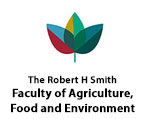Citation:
Date Published:
APRAbstract:
Rangelands are a dominant anthropogenic land use and a main driver of natural habitat loss worldwide. Land sharing, the integration of agricultural production and biodiversity conservation, may provide a platform for managing rangelands to fulfill multiple ecosystem services. However, livestock grazing can greatly affect biodiversity and little is known about its effects on providers of focal ecosystem services, such as pollinators. We investigated the effect of cattle grazing on bee communities and their foraging and nesting resources in Mediterranean rangelands. Specifically, we explored the effect of moderate cattle grazing on flowering plant abundance, species richness and composition, the diversity of nesting substrates, and consequently, the possible effects on wild bee and honey bee foraging activity, species diversity, and community composition. We conducted field research in the Mediterranean rangelands of Israel during the main bee activity season, in the spring of 2012 and 2013, comparing paired cattle-grazed and ungrazed areas. The availability of floral and nesting resources for bees was unaffected or positively affected by grazing. Similarly, wild bee abundance, species richness, and composition were not affected by grazing, but were instead shaped by spatiotemporal factors. Nor was honey bee activity level impaired by grazing. The foraging preferences of bees, as well as flower species composition and peak bloom differed between grazed and ungrazed areas. Therefore, in our studied rangelands, grazing had its main effect on the foraging choices of honey bees and wild bees, rather than on their abundance and diversity. Moreover, our results indicate the potentially important role of ungrazed patches in increasing nectar and pollen diversity and availability in rangelands for both honey bees and wild bees in the spring. Hence, maintaining a mosaic of moderately grazed and ungrazed patches is expected to provide the greatest benefits for wild bee conservation and honey bee activity in Mediterranean rangelands. Our findings support the notion of rangeland sharing by cattle and bees in Mediterranean ecosystems under moderate grazing intensities, mimicking the coexistence of honey bees, wild bees, and cattle in Mediterranean ecosystems on an evolutionary timescale.

